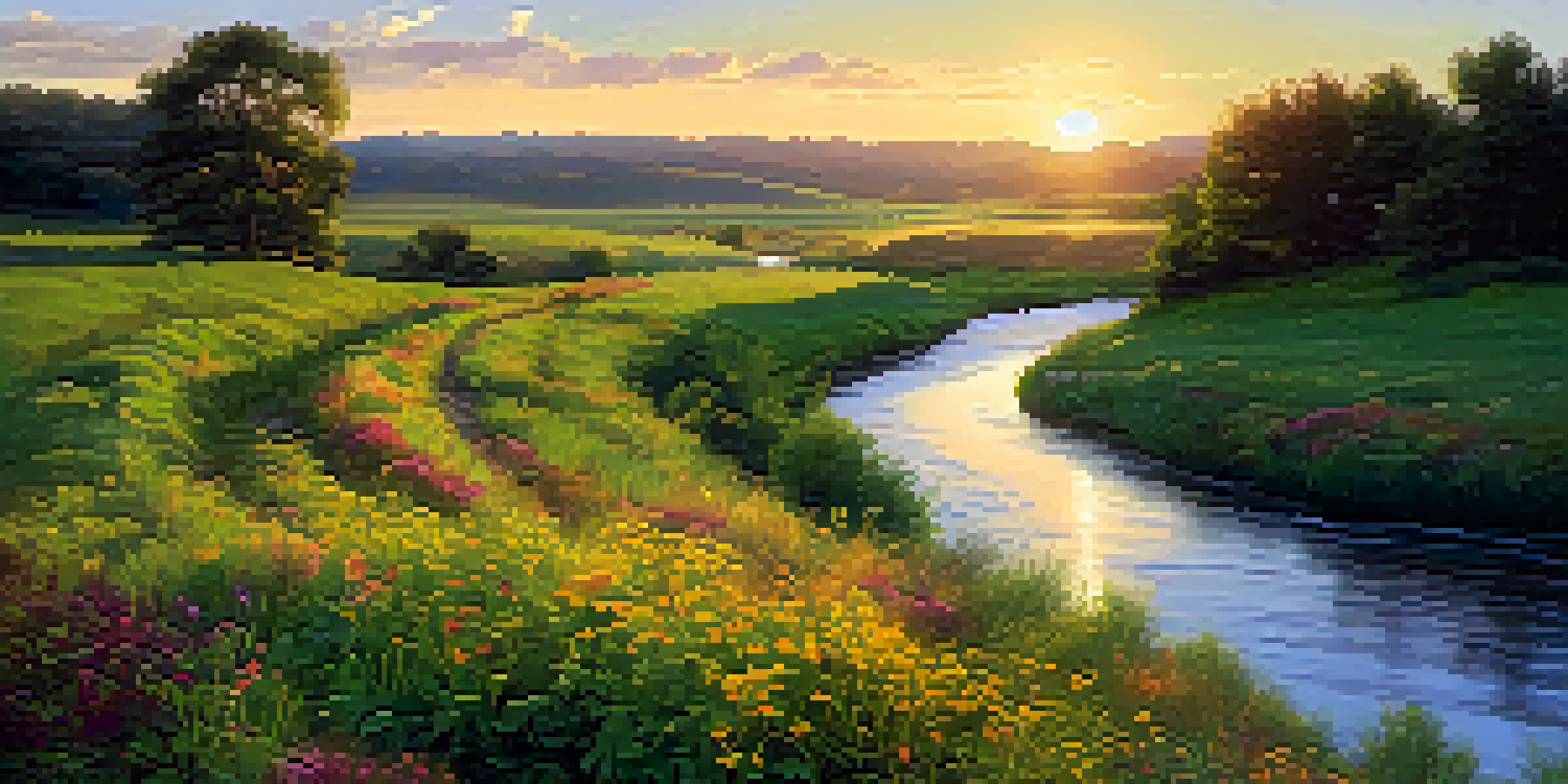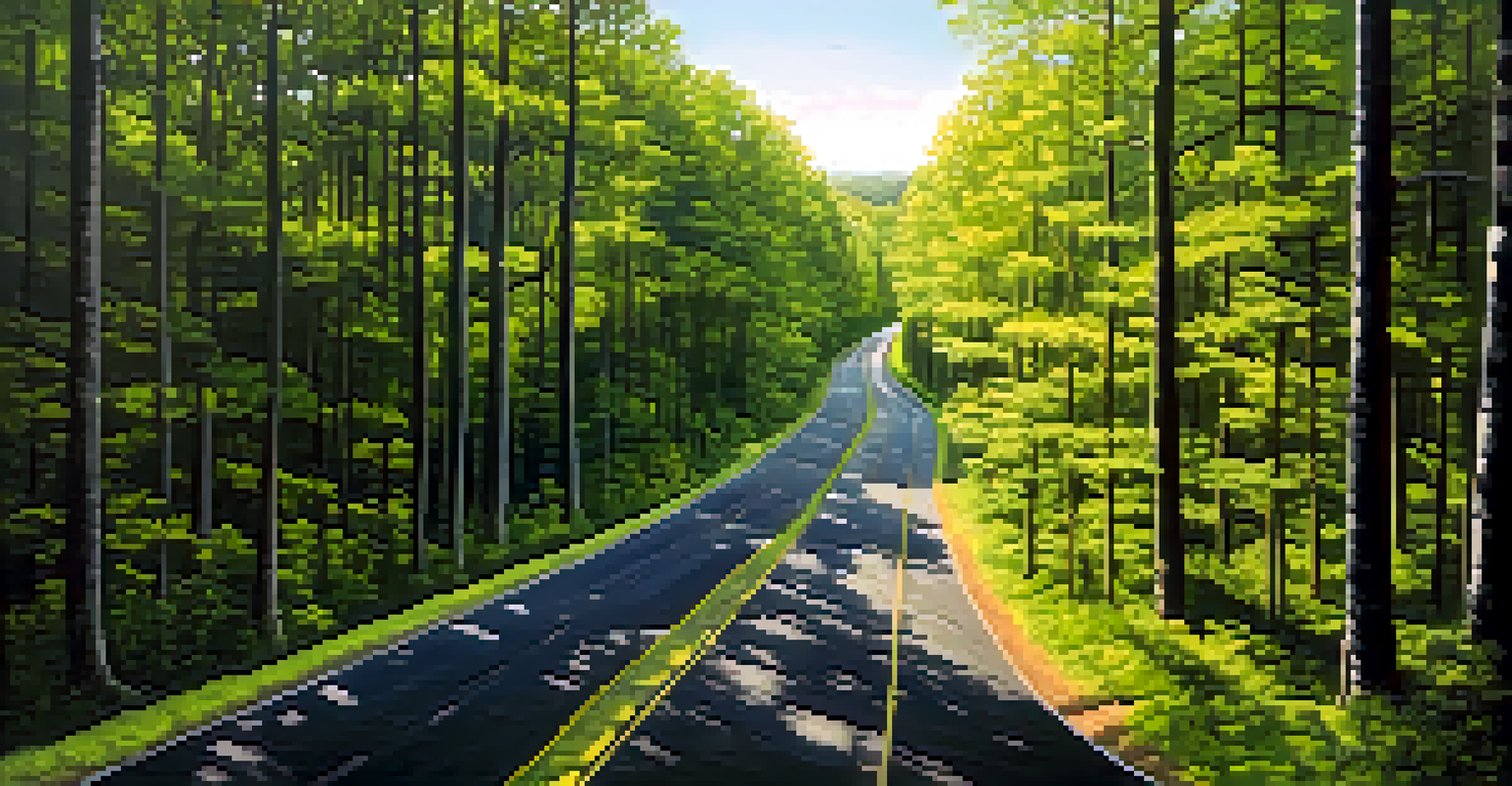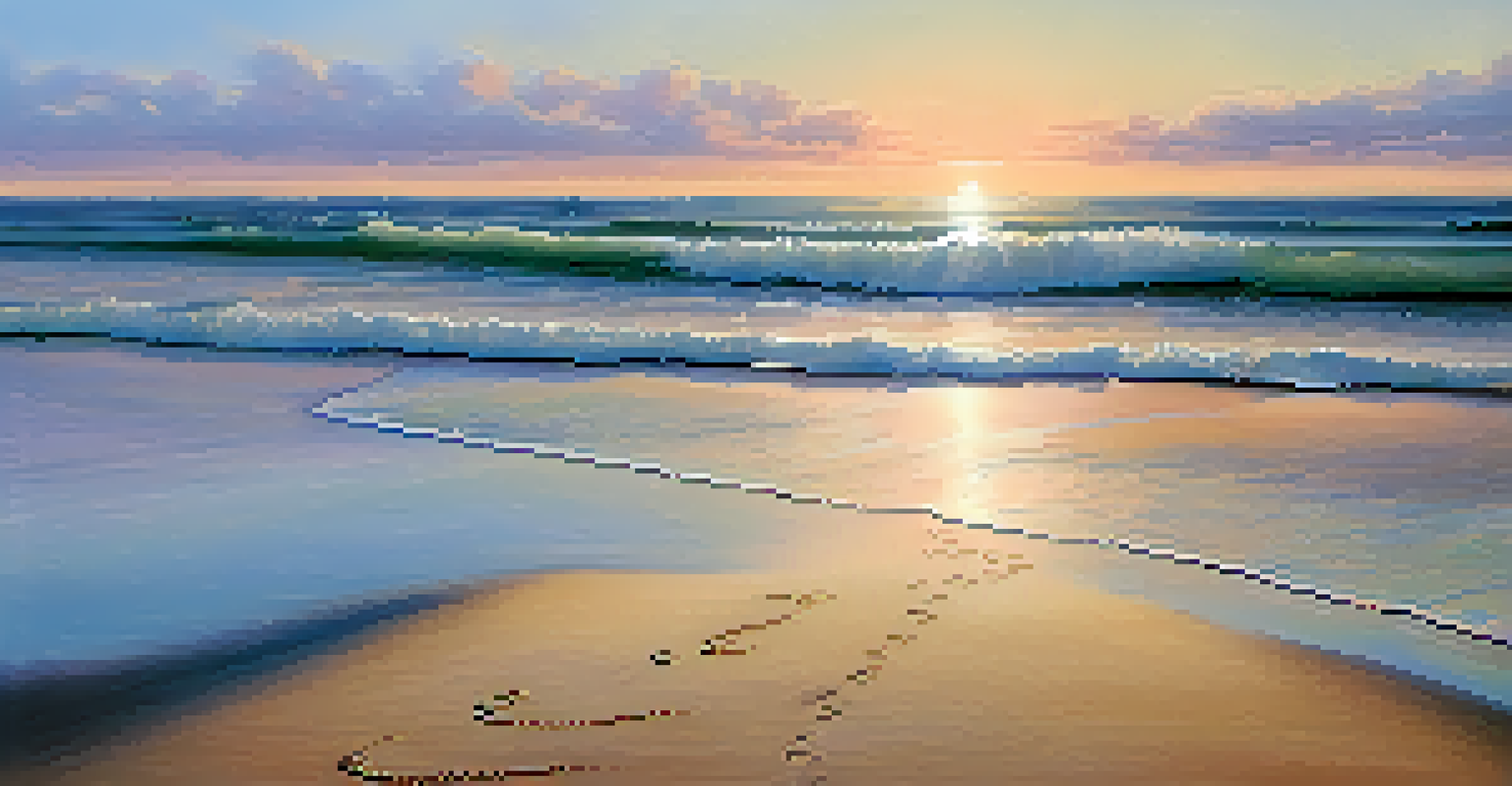Using Leading Lines to Enhance Landscape Compositions

What Are Leading Lines in Photography?
Leading lines are visual elements that guide the viewer's eye through an image. They can be natural, like rivers or paths, or man-made, like roads and fences. These lines create a sense of direction and help establish a focal point in your landscape compositions.
Photography is the story I fail to put into words.
Think of leading lines as arrows pointing toward the story you want to tell. They can draw attention to the main subject or create depth and perspective in your photographs. By understanding and using these lines, you can make your images more engaging and dynamic.
In landscape photography, leading lines can transform a simple scene into a compelling narrative. They invite viewers to explore the photograph and feel a connection with the landscape, enhancing the overall impact of your work.
The Role of Composition in Photography
Composition is the arrangement of elements within a photograph, and it plays a crucial role in how effectively a story is told. By carefully composing your shot, you can emphasize the leading lines and guide the viewer's gaze. This can help create a more balanced and harmonious image.

Think of composition as the framework of your photograph. It involves deciding where to place your subject, how to use space, and how to incorporate leading lines. A well-composed photograph not only looks pleasing but also communicates a sense of place and emotion.
Leading Lines Guide Viewer Focus
Leading lines are essential visual elements that direct the viewer's eye and enhance the narrative of your photographs.
When you master composition, your photos become more than just snapshots; they tell a story. Leading lines are an essential tool in this storytelling process, helping to create a visual flow that draws viewers in.
Choosing the Right Leading Lines
Not all leading lines are created equal. The best lines for your composition will depend on the landscape and the story you want to convey. Natural elements like rivers, trails, or rows of trees can create beautiful leading lines that enhance your image.
Composition is the strongest way of seeing.
Consider the context of your landscape when selecting leading lines. For example, a winding road can evoke feelings of adventure and exploration, while a calm river can convey serenity and peace. Each line you choose helps define the mood and message of your photograph.
Experiment with different lines in various landscapes to discover what works best for your style. Sometimes, the simplest lines can have the most profound impact, so don't be afraid to get creative and explore your surroundings.
Incorporating Leading Lines into Your Shots
When you're out in the field, look for opportunities to incorporate leading lines into your shots. This could mean positioning yourself at an angle that highlights a natural path or waiting for the perfect light to illuminate a road. The key is to be patient and observant.
Once you've identified a leading line, think about how to frame your shot. You might want to include elements that complement the line or create a strong contrast. This will help your leading line stand out and enhance the overall composition.
Composition Enhances Visual Storytelling
Effective composition, including the use of leading lines, helps create a balanced image that communicates emotion and a sense of place.
Remember, the leading line should enhance rather than overwhelm your subject. Balancing the line with other elements in the frame will create a cohesive image that feels complete and inviting.
Using Leading Lines for Depth and Perspective
One of the most powerful aspects of leading lines is their ability to create depth and perspective. By using lines that recede into the distance, you can draw the viewer's eye deeper into the image, creating a sense of three-dimensionality. This technique is particularly effective in landscape photography.
To achieve this effect, consider the angle and position of your shot. Low angles can accentuate leading lines, making them appear more prominent. Similarly, shooting from a higher vantage point can provide a broader view of the landscape and its lines.
By incorporating depth and perspective into your compositions, you invite viewers to explore the scene. This added dimension can make your photographs feel more immersive and engaging.
Post-Processing Techniques to Enhance Leading Lines
Post-processing can be a powerful tool for emphasizing leading lines in your landscape photos. Simple adjustments, like increasing contrast or sharpening the leading lines, can draw attention to them and enhance their impact. This step can make a significant difference in the final presentation of your image.
Additionally, consider cropping your image to better highlight the leading lines. Sometimes, a slight adjustment can create a more focused composition that directs the viewer's eye where you want it to go. Experiment with different cropping techniques to find the best fit for your photograph.
Practice Identifying Leading Lines
Regular practice in various landscapes will improve your ability to spot and utilize leading lines in your photography.
Remember that post-processing should enhance your image, not overshadow it. The goal is to maintain the natural beauty of the landscape while making your leading lines pop.
Practice: Finding Leading Lines in the Field
The best way to master the art of using leading lines is through practice. When you're out in the field, take time to explore your surroundings and actively search for leading lines. This could be during a hike, a trip to the beach, or even a walk in your neighborhood.
Challenge yourself to find different types of leading lines in various landscapes. You might discover that a familiar location can offer new perspectives and compositions. This exploration not only improves your skills but also deepens your connection with the environment.

Ultimately, the more you practice, the more intuitive it will become to identify and incorporate leading lines into your photography. Embrace the learning process and enjoy the journey of capturing stunning landscapes.